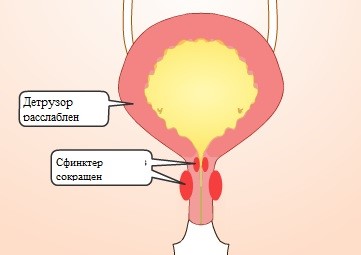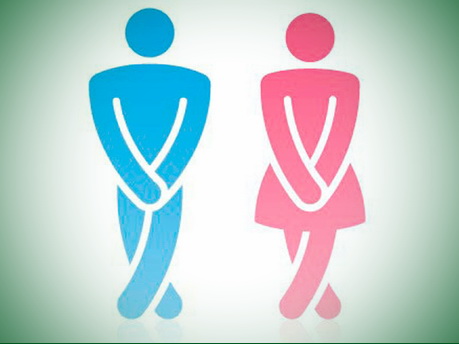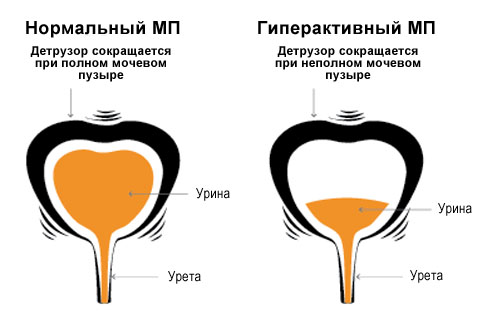Bladder volume in children
The bladder is one of the main organs of the genitourinary system, responsible for the function of accumulation and excretion of urine from the body. It is located in the lower part of the body, to be more specific, in the small pelvis. The bubble itself is small in size, but is formed by muscle tissue, therefore it is prone to stretching.
How does urine appear in it? It drains through the urinary tract (ureters) from the kidneys. As it fills, urges begin to form, signaling the need to urinate. As soon as a person feels the urge to urinate, he needs to do so immediately.
The bladder in children is much smaller than in adults, but with age, as the whole organism grows, its size also increases. There are no distinctive features in terms of organ volume in women and men. What are the rules for all categories of people?
The volume of the bladder in an adult
To calculate the value of the volume of the bladder, they resort to formulas where the shape of the organ is considered as a cylinder or an ellipse. Main characteristics:
- Width;
- Height;
- Length;
Taken on the basis of ultrasound. Modern ultrasound machines can automatically calculate the volume of the bladder, but to make sure the calculations are correct, professional specialists themselves double-check the data. To do this, the width, height and length are multiplied among themselves, and then multiplied by 0.75.
The capacity of the described hollow organ is approximately half a liter. Of course, depending on the structure and individual characteristics, in individuals it can reach 700 milliliters. Thanks to the muscle fibers with which it is formed, its walls are capable of strong stretching, therefore, in rare cases, it happens that about a liter of liquid accumulates in it.
Under normal conditions, if a person is healthy, his bladder can hold 300 milliliters of urine for two to five hours straight. However, this should not be done without the need.
In women and men, the process of urine excretion is controlled and regulated with the participation of circular muscles, they are also sphincters. Urination in humans should be performed voluntarily and reflexively, but at the same time controlled by consciousness. When a signal is given to the brain, it gives out a reflex, and the sphincters relax, the detrusor begins to contract, and under its action a stream of urine is created. But also, not a single urinary process passes without the participation of the muscles of the perineum and the press. 
It is possible to determine the volume of the bladder in men and women during ultrasound diagnostics. It's necessary:
- When diagnosing diseases of the bladder;
- To calculate the volume of residual urine in the body;
- To confirm the diagnosis of urinary retention.
Each of you must have had an overflowing bubble, but not everyone knows that it is very dangerous. There have been cases when a person got into a minor accident and died, due to a blow to a full bladder, due to which it burst and led to death.
The muscle that makes up the urinary organ has a tendency to stretch and contract. When a man endures, he allows a great deal to accumulate  the volume of urine, under the force of gravity of which, the walls of the bladder stretch and weaken. Any push in this case can be fatal.
the volume of urine, under the force of gravity of which, the walls of the bladder stretch and weaken. Any push in this case can be fatal.
Bicyclists and motorists should be very careful. If you are going to hit the road, then empty your bladder before driving your vehicle and do not tolerate if the desire to urinate has already arisen on the road.
In a more relaxed environment, the containment of urges is not so serious. The longer a person endures, the stronger the urge will increase, and in the end he will achieve what he wants. But if you constantly do this, then there will be a risk of developing pathological disorders in the work of the organ and the entire genitourinary system.
How often should you empty your bladder?
The answer to this question is purely individual. It all depends on the volume of the bladder of a particular person. Of course, after drinking a glass of water, you do not need to immediately run to the toilet. The liquid must first enter the stomach, from there to the intestines, from it to the bloodstream, and only then to the kidneys. In the bean-shaped structures, the so-called primary urine appears, which is filtered and gradually drains to the bladder.
The very first urge is experienced by a person whose bubble is 60% full. If you consume about two liters of water per day, then the normal number of visits to the toilet room can be considered from 4 to 6.

Then, perhaps, this is an alarming signal about the disease, especially if it is accompanied by some other genitourinary disorders.
One of the common pathologies among the adult and elderly population is an overactive bladder. And if in the first group the symptoms of OAB are manifested in 20% of all cases, then with age the frequency doubles. The disease is the same for both women and men. Sometimes this problem forces them to quit work and rarely leave the house, as the intolerable force of the urge often leads to incontinence.
If you are faced with something like this, then you should not be silent and hide it in yourself. Hurry to the urologist as soon as possible, who will give you clear recommendations, prescribe therapeutic exercises and prescribe medications, if the situation requires it.
Bladder volume in children
 The bladder in newborns is localized above the symphysis, from where it gradually shifts to the small pelvis as it develops and the child grows. An empty organ is somewhat similar to a spindle, as it fills up, it acquires an ovoid shape, and after that it becomes spherical.
The bladder in newborns is localized above the symphysis, from where it gradually shifts to the small pelvis as it develops and the child grows. An empty organ is somewhat similar to a spindle, as it fills up, it acquires an ovoid shape, and after that it becomes spherical.
- The volume of the bladder in newborns is only 30 milliliters,
- By the age of five, it doubles in size.
- At ten years - up to 100 milliliters,
- In older children - up to 200 milliliters.
The internal structures of babies are formed at the fetal stage. So by the seventh month of pregnancy, the bladder of the fetus consists of three clearly visible layers. By the time of birth and up to a year, the walls of the organ are quite thick, then they become thinner due to a change in size and stretching.




